This Faux Floating Beam Mantel was the beautiful final touch on the Black Roman Clay Fireplace I modernized for my brother.
This post includes affiliate links.

Every fireplace needs an attractive mantel, and now that my brother’s fireplace remodel is complete, I was happy to build him a modern wooden mantel to complement the new fireplace design. This simple tutorial is for a wooden box mantel, which is lighter and easier to hang than a solid wood beam. A solid floating beam mantle would be very heavy and very expensive. You’d never know this is a faux mantel beam!
FLOATING WOODEN MANTEL TOOLS & SUPPLIES
- 1 x 4 Common Board
- 3 – 1-in x 6-in x 8-ft Pine Boards
- Miter Saw
- Tape
- Wood Screws
- Tape Measure
- Drill
- Nail Gun
- Brad Nails
- 3″ Power Pro Screws
- Orbital Sandpaper Pack
- Orbital Sander
- Wood glue
- Level
- Rags for stain
- Stud Finder
- Your Choice of Stain
Step 1 – Choosing Your Wood
Try to find boards that aren’t warped. The straighter the boards, the less janky the end result looks. Otherwise your modern fireplace mantel may look more abstract than you’d like.
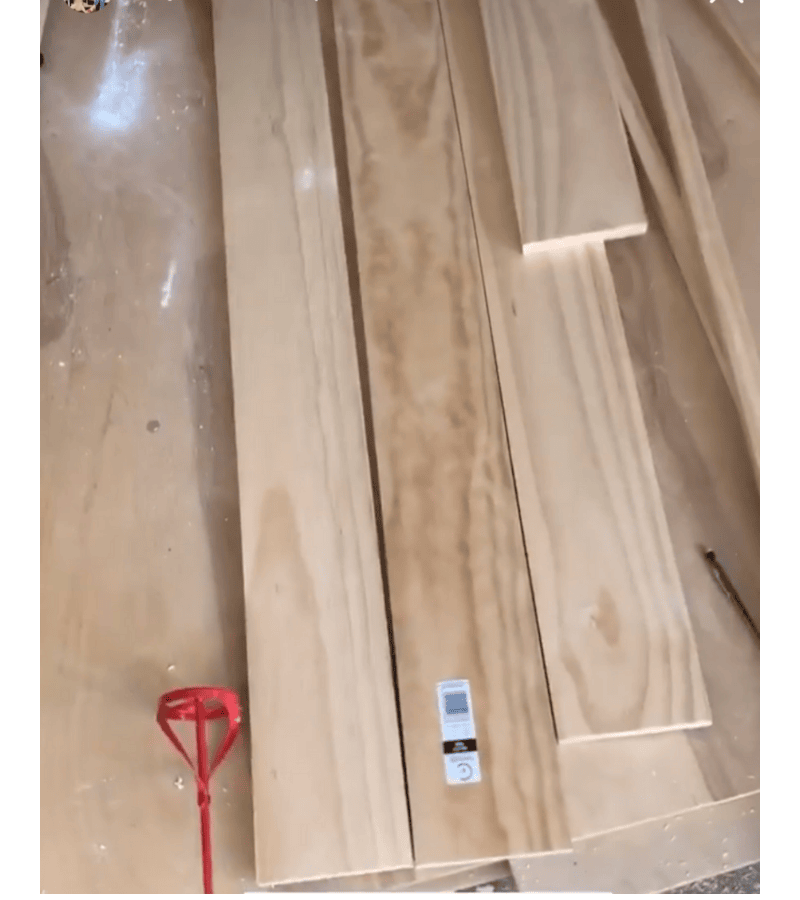
First thing I did was decide on the length. The fireplace is on the wider side, so 6 feet seemed right for the space. Finding pine that already measures 6 feet is difficult, so I cut 8 foot boards down to 6 feet. Then I cut two 6 x 6 inch squares to cap off the sides.
It’s a good idea to choose the placement of your wood before making your cuts. Some boards have a nicer wood grain pattern than others, so choose your prettiest board for the mantel face.
Step 2 – Mitering the Wood
Because I wanted the mantel to look like a solid floating beam, I needed to miter all the edges to meet together seamlessly. Had I chosen butt joints, the seams would be more difficult to hide. However, if you don’t have a miter or table saw, butt joints are your best option.
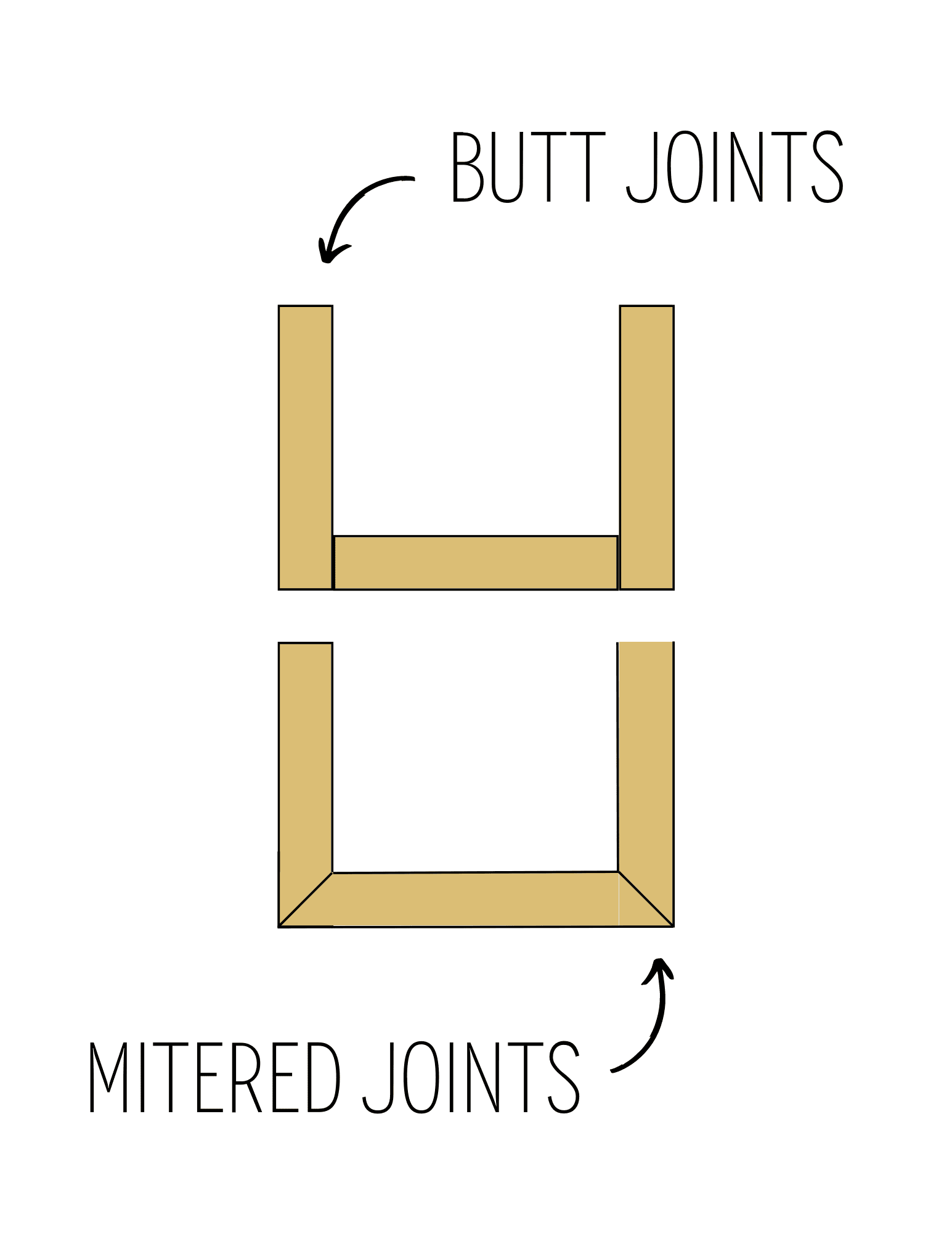
I set the table saw angle to 45 degrees and got to work.

The top and bottom boards were cut down the length on one edge, and both of the ends. The reason I only mitered those three sides is because this is a backless, hollow floating mantel; one long edge of each board would be touching the fireplace, and that edge needed to remain straight.
The front facing board was mitered down both side edges, as well as both ends. And lastly, the two end caps were mitered on three edges, while that last edge remained straight since it would also be touching the fireplace wall.

Step 3 – Assembling and Securing the Wood
After finishing the cuts, the mantel was ready to assemble. I placed long strips of painters tape underneath the three pieces of wood on each end.
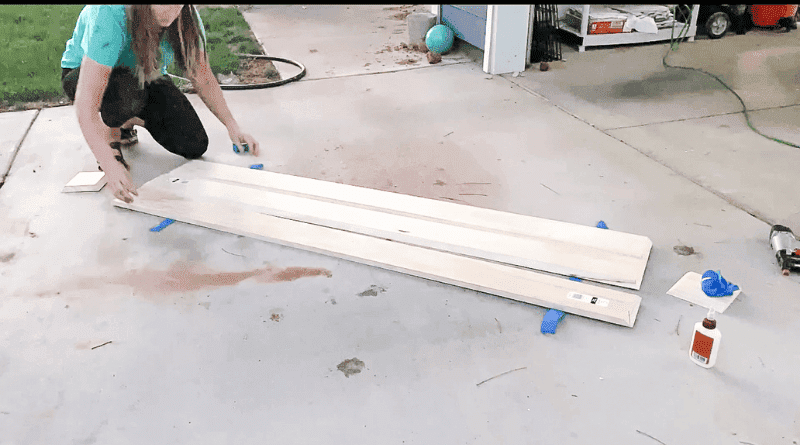
Then I added a thin line of wood glue down the length of one mitered edge.
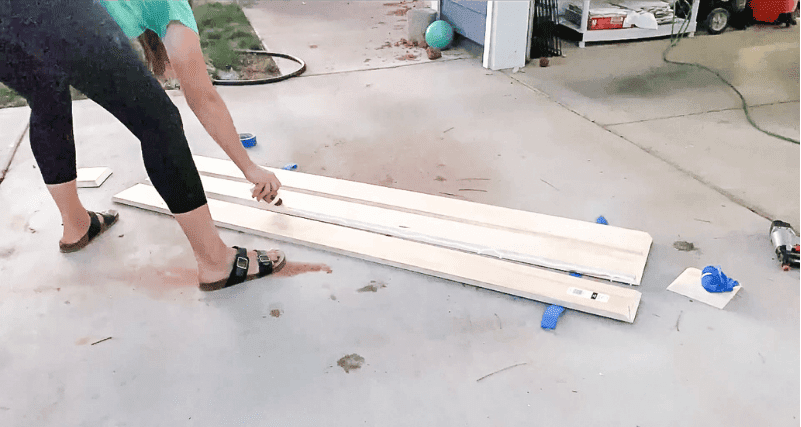
When I folded the board so the mitered edges met, the tape helped keep the wood in place while I nailed it together. However, it’s the wood glue that really secures the bond.
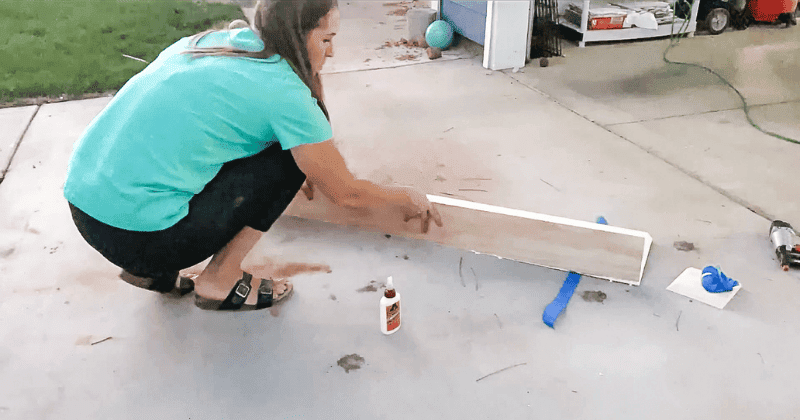
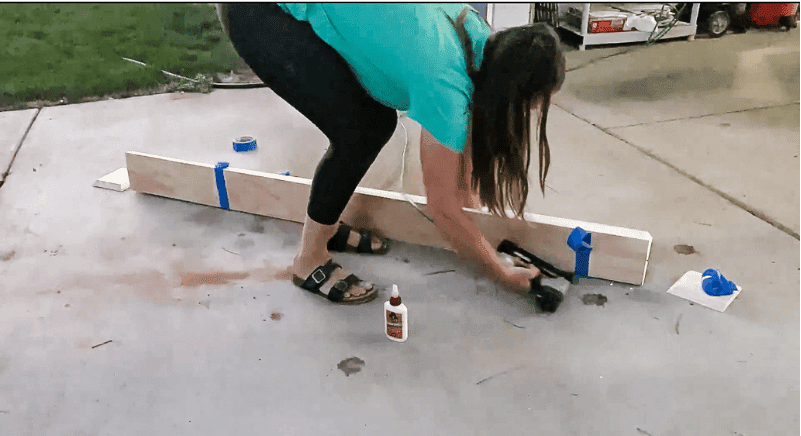
I did the same process down the length of the other mitered edges. Then I added wood glue to the mitered edges of the end caps and nailed them into place. If any wood glue oozed out of the corners, I made sure to wipe if off because wood that’s covered in glue won’t absorb stain, and your wooden beam mantel will look splotchy.
Step 4 – How to Construct French Cleats
After waiting 24hrs for the wood glue to dry, the next step was to prepare the floating beam mantel to be hung. The technique I used to secure the mantel to the fireplace is called a French cleat. It sounds intimidating, but it’s actually quite simple, and a great way to support heavy items.
I kept my table saw at a 45 degree angle and ripped the common board down the center, creating two French cleats, each having a 45 degree angle and fitting together perfectly. You can’t get any simpler than that.
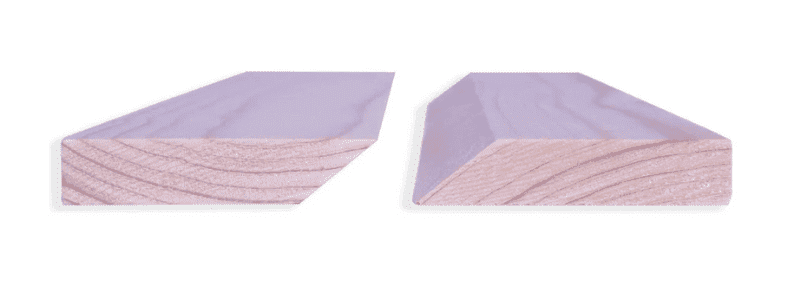

The cleats need to fit inside the mantel with a few inches of space on either side. I trimmed my common board to about 5 1/2 feet.
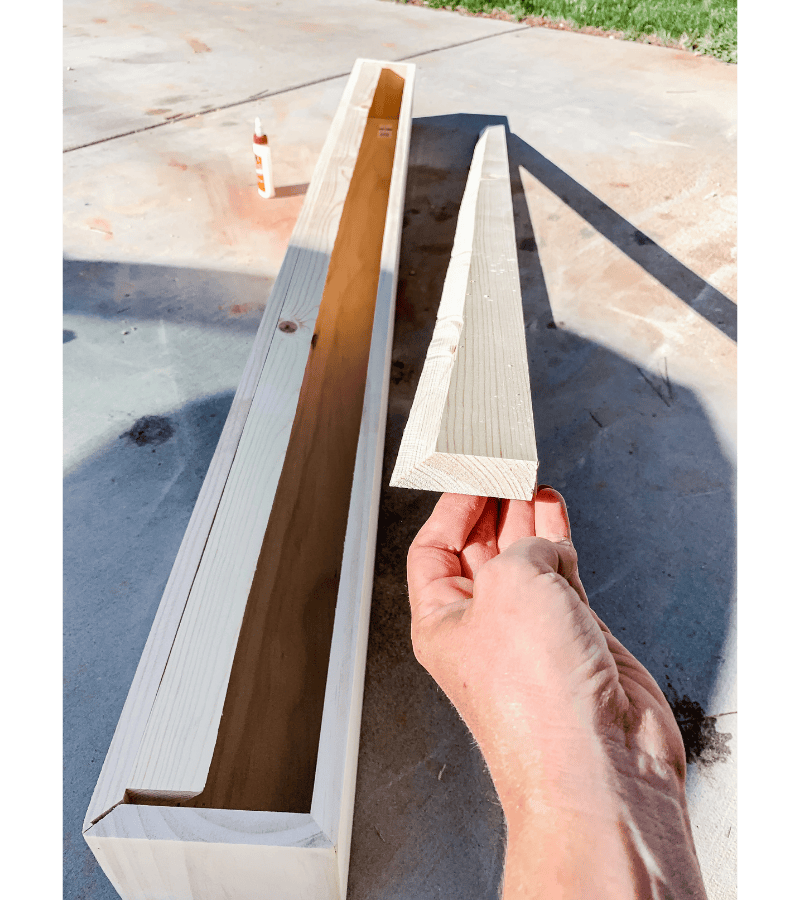
If you’d rather skip this part, you can purchase a French Cleat set from Home Depot.
One piece is attached inside the mantel, and the other piece attaches to the fireplace. Make sure you’re attaching the correct cleat with the angle facing the correct way. I used wood screws to attach the cleat to the back of the wood mantel, and then it was ready for the next step.
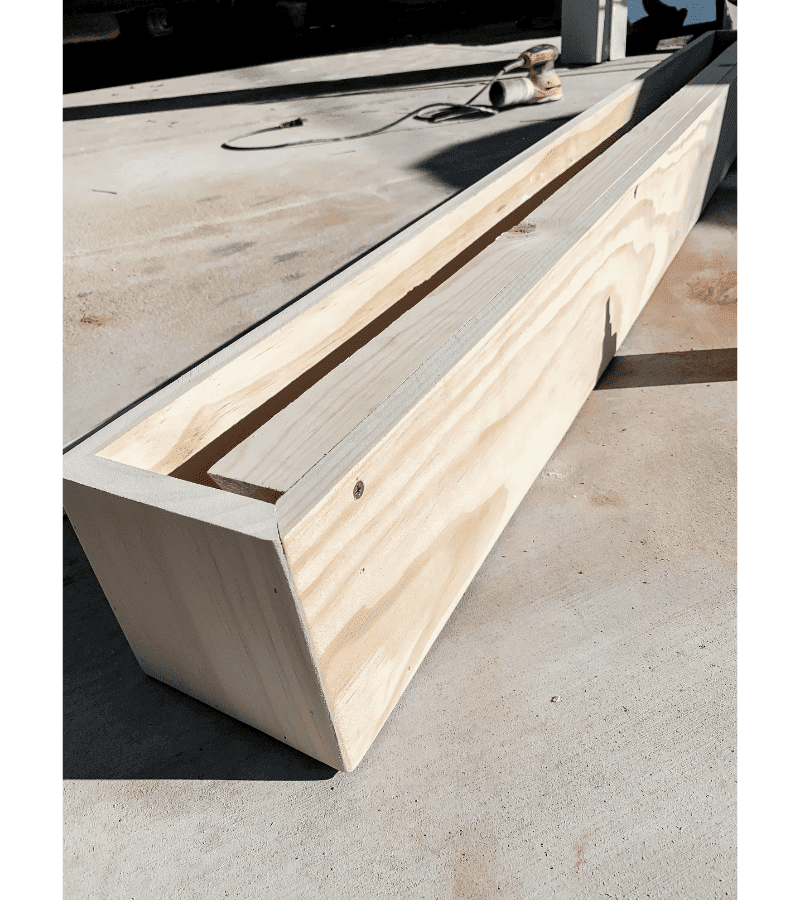
Step 5 – Sanding and Staining the Floating Beam Mantle
Since the screws for the cleat are visible, you can fill them in with wood filler. If your mantel has gaps, fill it with wood filler. Wood filler is a cure all. My boards were warped from the start, and I needed a bit of wood filler. A bit x 1000.
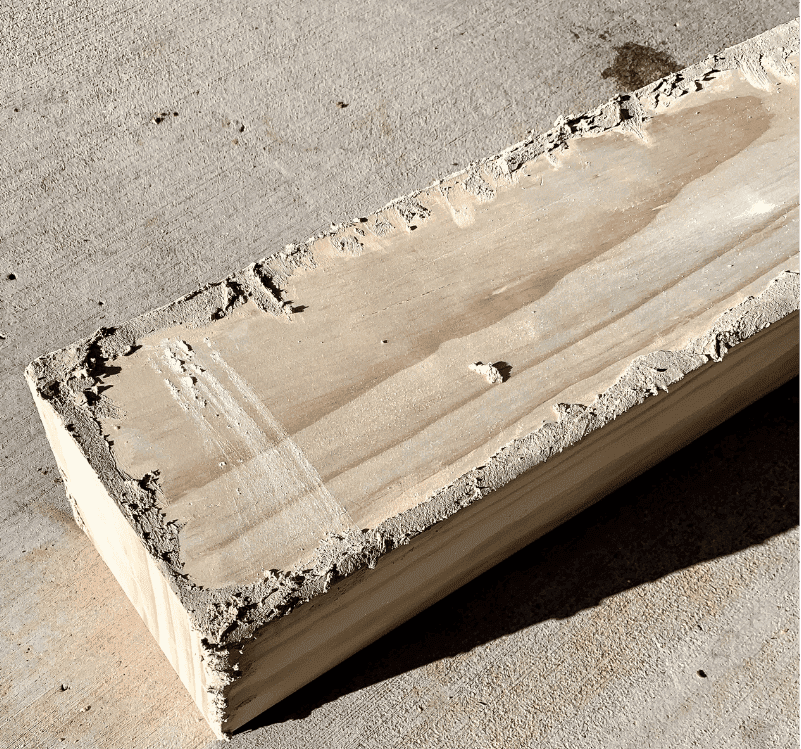
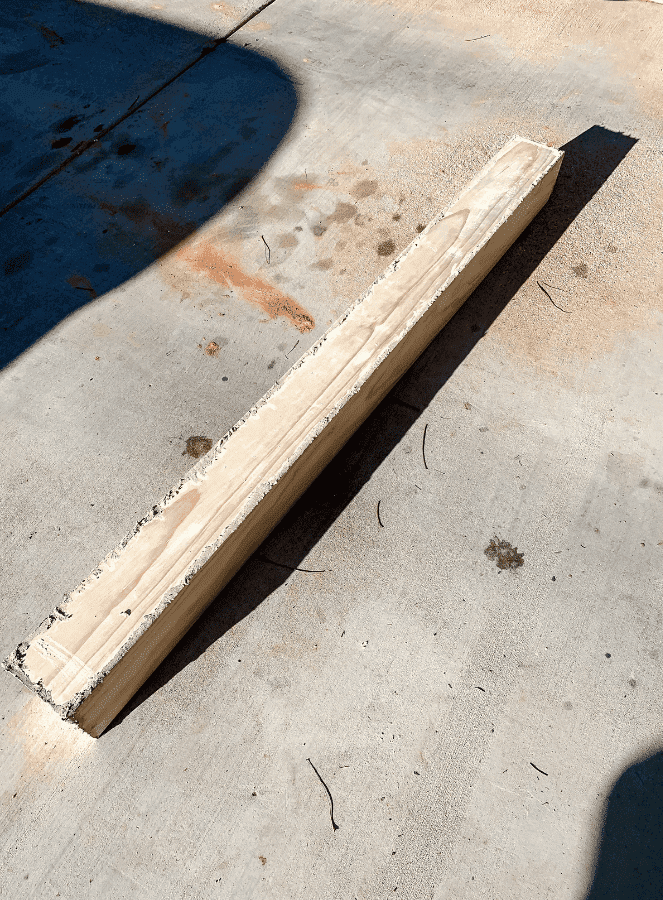
After that was dry, I went over the fireplace mantel with 60 grit sandpaper, and then followed it up with 150 grit. I also rounded out the corners just a touch, which helped the seams look flawless. Then I wiped it clean.
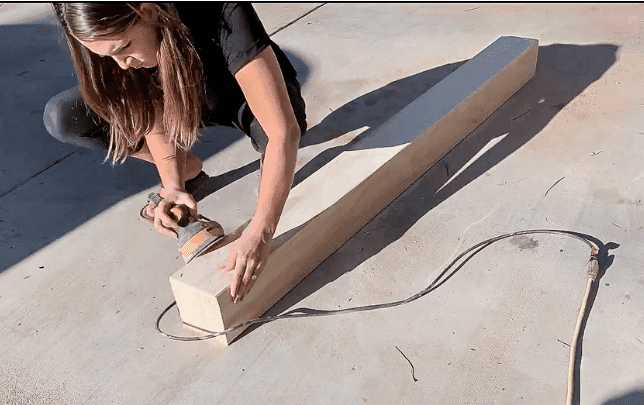
Pine is a soft wood which makes it pretty absorbent, so before I applied stain, I went over the wood with water so the stain wouldn’t soak in as much.

Just as soon as I had finished brushing on water, I brushed on the stain. After that was dry, I applied a few coats of Polyacrylic (or maybe you didn’t seal it?) and it was ready to hang.
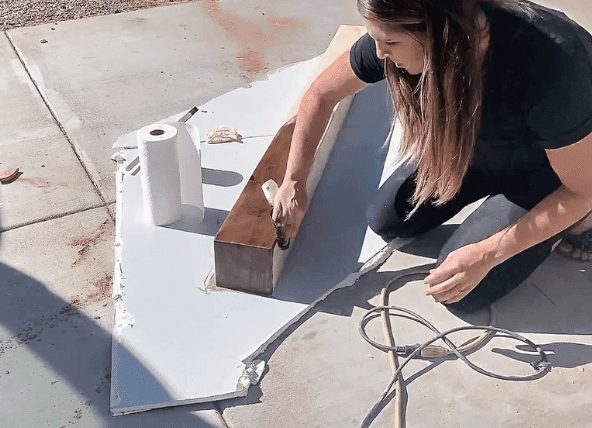
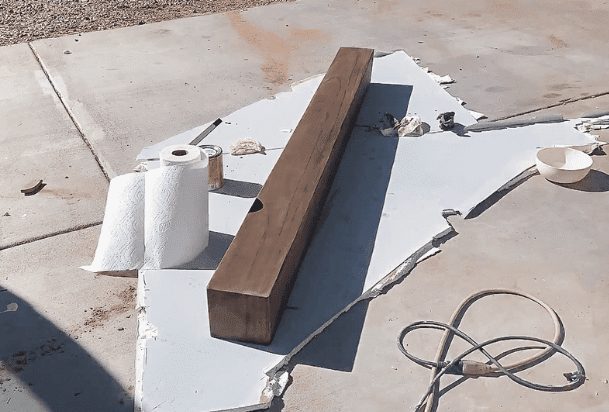
Step 6 – How to Secure the French Cleat to the Fireplace
You’ll definitely want to use a level and stud finder for this next part. As well, keep in mind the minimum distance between a fireplace and a floating wooden mantel when deciding where it will hang. Mine hung about 5 feet from the ground.
First step is to mark the location of each stud. It’s important for the bottom cleat to be perfectly level, and trying to balance the cleat while attaching it to the wall, while also trying to keep it level, can be tricky. Rather, pencil in a long, level line on the fireplace where the bottom of the cleat will be touching. Then line up the cleat to the line, and use Power Pro Screws to secure the cleat into each stud the board crosses over.
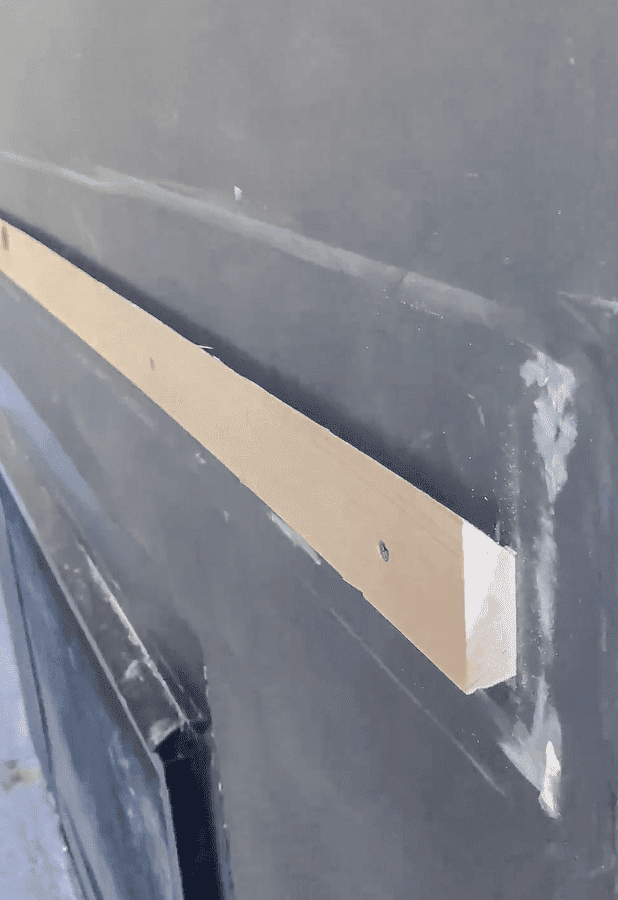
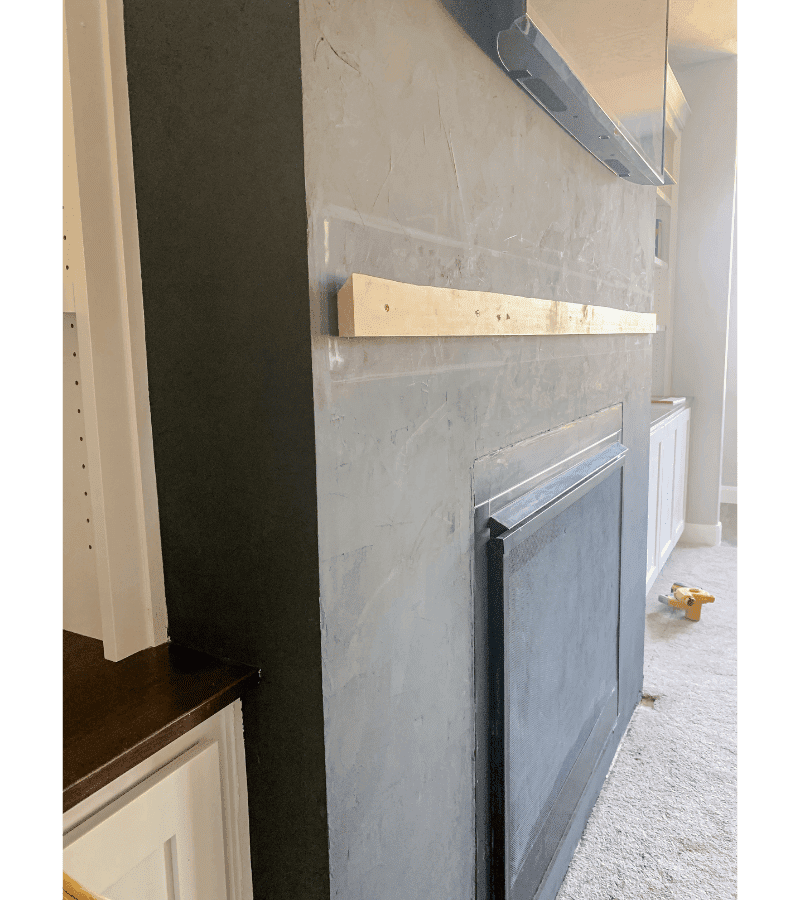
Step 7 – Hanging the Mantel
The last thing to do is “stack” the mantel cleat over the fireplace cleat.
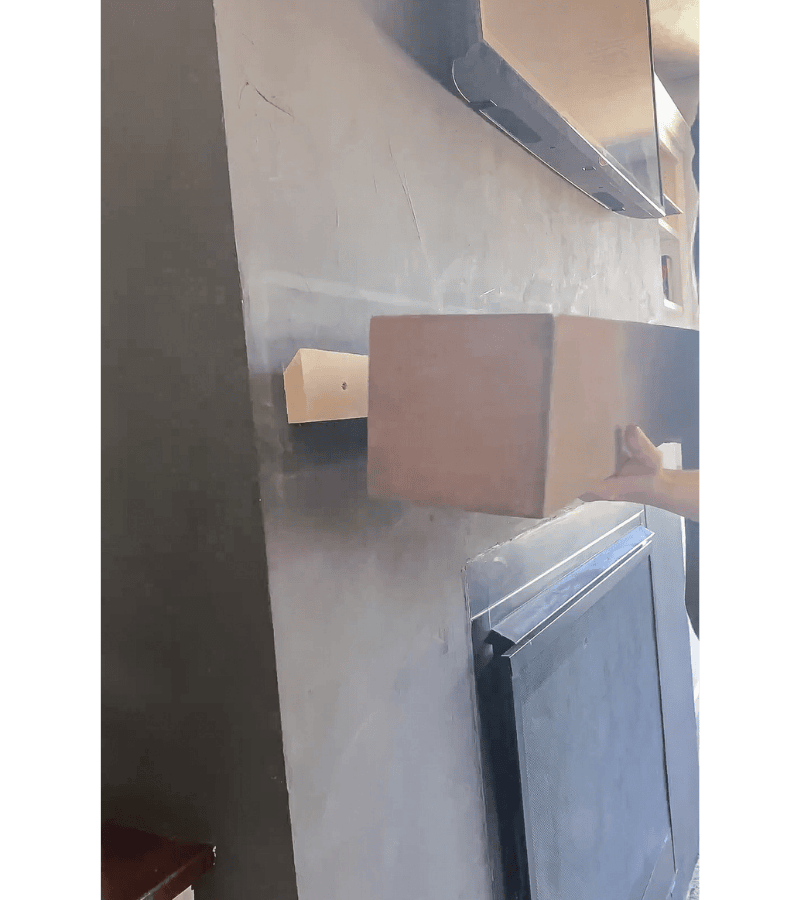

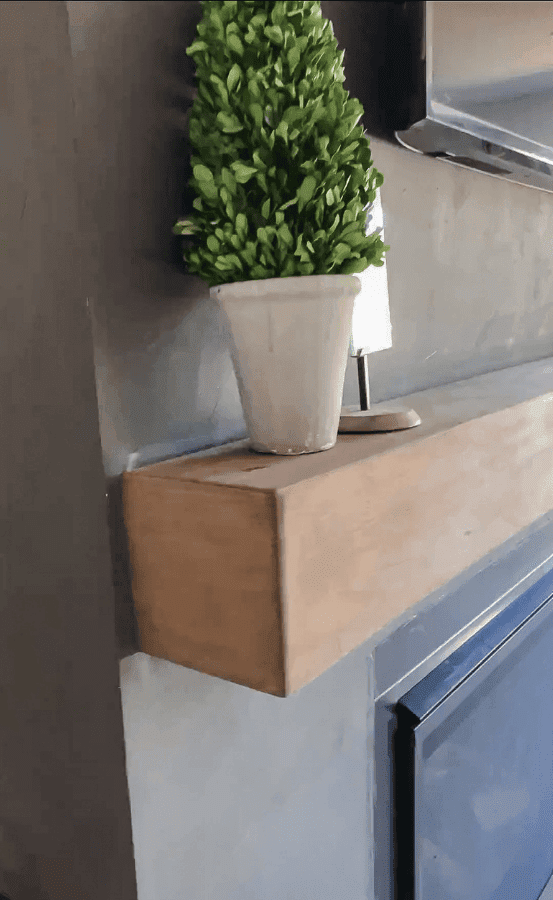
You could leave it as is, or if you foresee small humans hanging like monkeys from the mantel, there are several options. One is to add a horizontal screw through the mantel into the cleat on each mantel side. A less conspicuous option is to shoot several brad nails into the cleat at an angle. Lastly, you could drill 3 inch screws through the top of the mantel that would reach all the way to the bottom cleat. Whatever you decided, now you’re done!
Finished Faux Floating Beam Mantel!

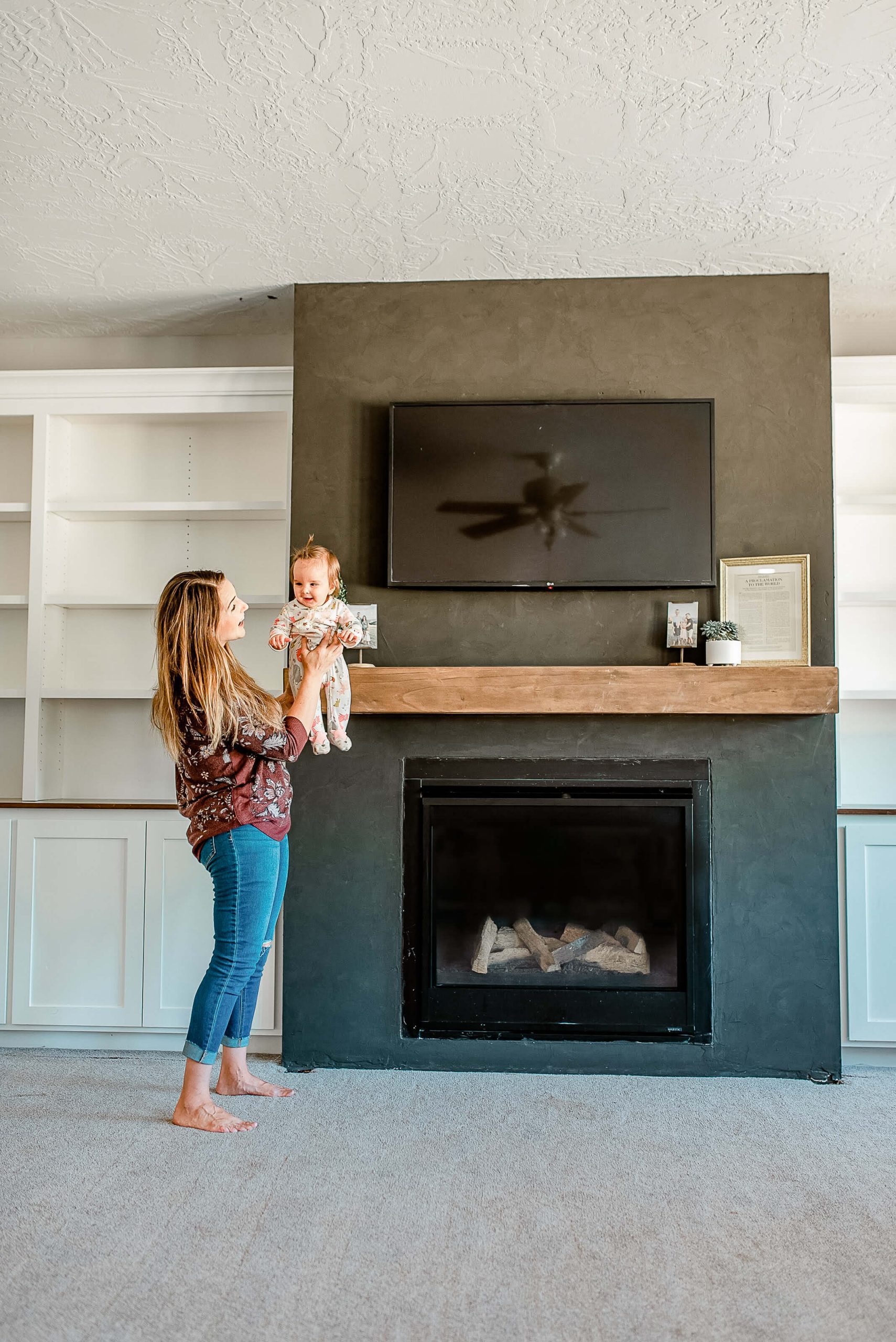
I was worried the stain was too dark, but the dark Roman Clay makes the mantel shine.
Check out my Black Roman Clay Fireplace tutorial if you love this look. It was really easy to apply and Roman Clay is much more forgiving than paint.
You can check out this reel on Instagram for the entire fireplace makeover from start to finish.
Thanks for reading! Leave a comment if you have any questions.


What is your stain color?
I think it’s Early American by Minwax
[…] DIY Floating Beam Mantel from Crystal Montenegro Home […]